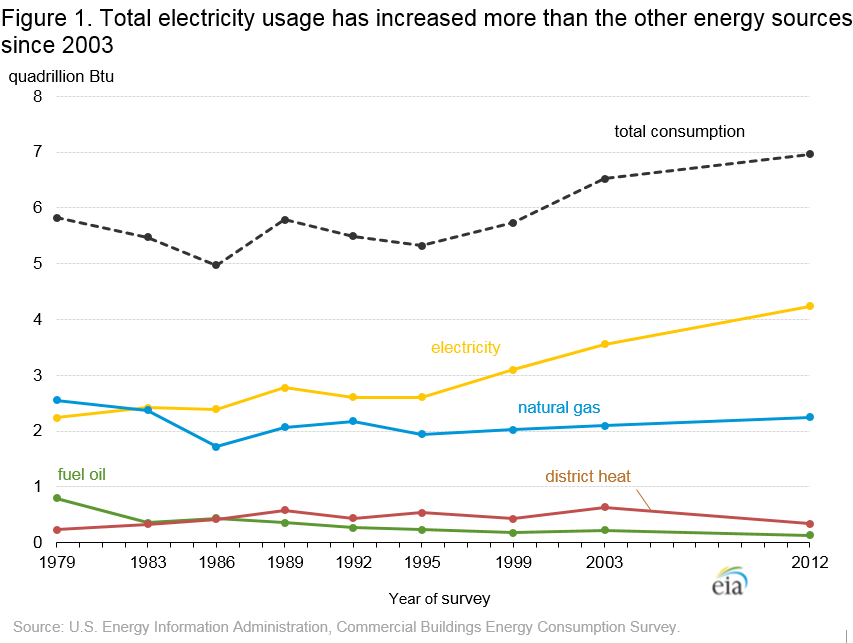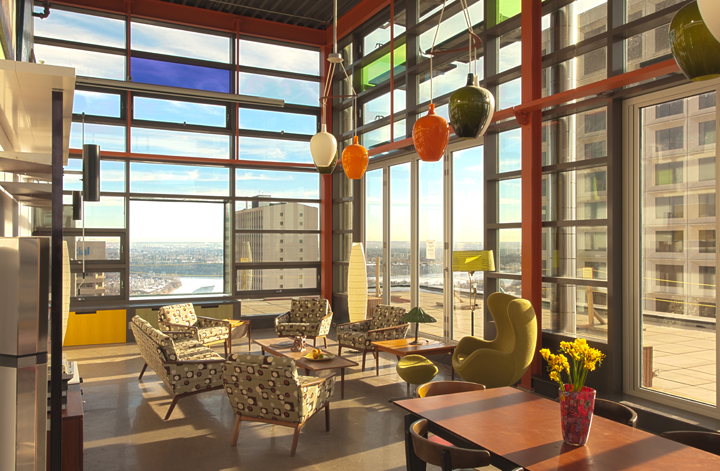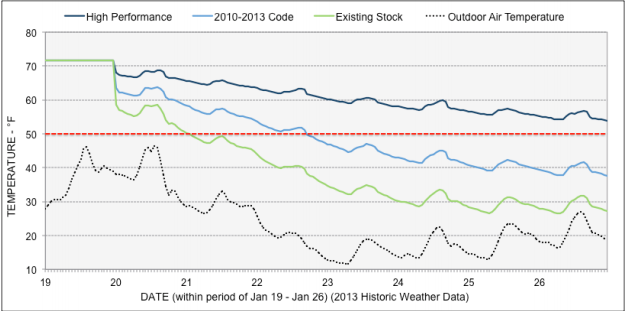What’s the Best Long Term Investment: Excellent Building Envelopes or Better Mechanical Systems?
October 18, 2021

As you’ve no doubt noticed, Energy Codes are becoming more and more stringent!
Several regions have moved to outcome-based codes, in which the building’s performance is judged by actual energy usage, including New York City, one of the biggest cities in the world, which has made the commitment to be carbon neutral by 2050. To achieve this, The Big Apple is requiring new buildings to meet extremely strict carbon reduction targets by 2024, with threats of significant fines for those who do not comply (yikes!). NYC’s carbon targets will continue to become more and more stringent in 2030, then again in 2035, and so on, very much like the BC Energy Step Code.
It’s only a matter of time, then, before cities large and small have similar mandates. So how are we going to meet these targets? Is it even possible? Well, we know one thing, there’s no way these targets will be met just by improving the mechanical systems of new building. Meaning, we will also need to invest in excellent envelopes!
What’s the Difference Between a Better Mechanical System and an Excellent Envelope?
We’re glad you asked! A better mechanical system, such as an HVAC system, regulates the temperature of a building by exchanging fresh air with the outside, running it through the building via fans, and heating or cooling the internally circulating air as required for occupant comfort. This is the “active” approach to managing the interior environment because it requires constant input of energy, and the larger the HVAC system, the more energy is required! And you might’ve noticed that energy prices are a little bit volatile these days…

Investing in excellent building envelopes, on the other hand, is an investment in the walls, roofs, foundations, doors, and glazing systems of the building. This is an investment in the “passive” management of occupant comfort because these envelope components are designed to balance energy conservation with natural daylight without additional energy inputs. Glazing systems (windows and curtain walls) are of particular importance in this equation, since poorly performing glazing systems are where the majority of energy transfers in and out of the building. Poorly performing glazing systems also increase stress on mechanical systems, requiring more energy for them to operate and more frequent maintenance intervals, which also gets expensive! Therefore, to limit the need for these outsized operational investments in mechanical systems, it’s important to ensure that glass and framing components are high quality so as to minimize heat transfer as much as possible.

Why Are Better Mechanical Systems Usually Specified?
The main reason better mechanical systems are usually specified over excellent envelopes is because, as Dr. Helen Sanders, PhD mentions in her recent interview with Creating Structure podcast, they are typically less expensive to install up-front. And, well, money talks! So, mechanical systems look more attractive to builders and architects since they allow the building to be built cheaper while still meeting environmental requirements set out by the energy code (at least for now…).
Dr. Sanders also observed in her podcast interview that mechanical ventilation companies usually get involved sooner in the design process than a lot of envelope companies, including glazing companies. As a result, in many cases, most of the design is already completed with the HVAC industry in mind and there is less room (and time) for changing the design when the glass and other envelope companies become involved later in the design process. We recognize that it can also be hard for architects to get away from thinking, “Well this combination of HVAC and envelope worked well last time, so why not this time?” We know it can be hard to make changes! But without changing the HVAC/envelope combination, it will be increasingly challenging (if not impossible) to meet Energy Codes as they become more and more stringent.

Why Should We Invest In An Excellent Building Envelope?
Although an excellent envelope may seem costly up front, it’s very likely to save our clients money in the long run in terms of maintenance and energy costs (again, money talks)! HVAC systems can be very costly to maintain, whereas excellent envelopes require hardly any maintenance at all, and even then at very long intervals. In terms of energy savings, without the need to overuse a heating or cooling system, or, in extreme cases, without the need for a heating or cooling system at all, our building’s energy costs can be dramatically reduced (as with its ecological footprint).
A real life example? GlasCurtain’s very first project, the Cambridge Lofts Penthouse in Edmonton, AB (see photo below) is an entirely passively-ventilated residence. The suite is entirely comfortable down to -20 degrees Celsius, eliminating the need for an HVAC system. Our guess is that we will need to see more buildings like this as Energy Codes continue to become more stringent in terms of reducing environmental impact. If we’re ever going to get to Net-Zero, we need to make sure we are driving performance improvements through the envelope, not just the mechanical system.

If that weren’t enough to convince you, consider this: mechanical systems are much less resilient in a world where power outages are increasingly frequent. According to a 2014 study by Atelier Ten, high-performance envelopes keep buildings habitable for several days after power outages, such as those caused by heat waves or winter storms. Comparatively, the envelopes of typical buildings can only maintain habitability for a few hours under the same conditions. So, that better HVAC system may seem like a good idea initially, but in emergency situations, which are becoming more frequent(!), it won’t ensure the safety and comfort of the building’s occupants nearly as much as an excellent envelope will.

How Can GlasCurtain Help?
Not to worry, GlasCurtain is here! We’re always happy to help you create an envelope with industry-leading thermal performance and to work through all the design considerations required when specifying a high-performance building envelope — just like we did for the Cambridge Lofts Penthouse and now over a dozen projects across Canada. GlasCurtain’s fibreglass-framed triple-glazed curtain wall systems, including our Passive House Certified system, offer the best thermal performance in the world.
With our products, your building will look beautiful, have excellent thermal performance, save building owners money and time, and keep occupants safe in the event of a power outage during extreme weather. By investing in an excellent envelope rather than just a better mechanical system, your building will also more easily meet increasingly stringent Energy Codes while maintaining desirable window-to-wall ratios.
Thank you so much for taking the time to read this blog post.
If you’re interested in learning more about how GlasCurtain can improve the ROI, sustainability, and aesthetics of your next project, Let’s Chat!
Photo Credits: Jason Maess, GlasCurtain (1) Legacy AC (2) Energy Education (3) EIA (4) GlasCurtain (5) Atelier Ten (6)

